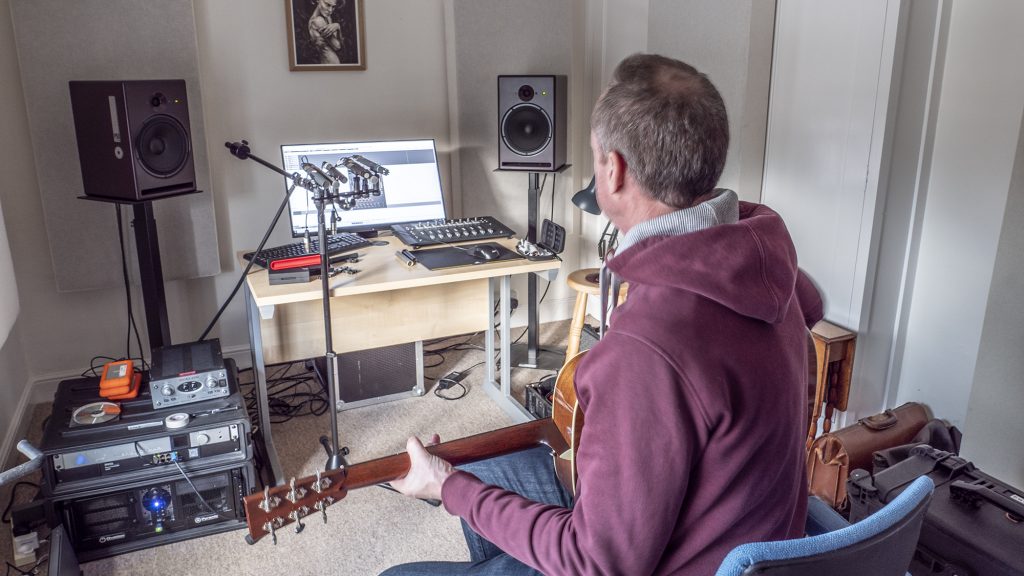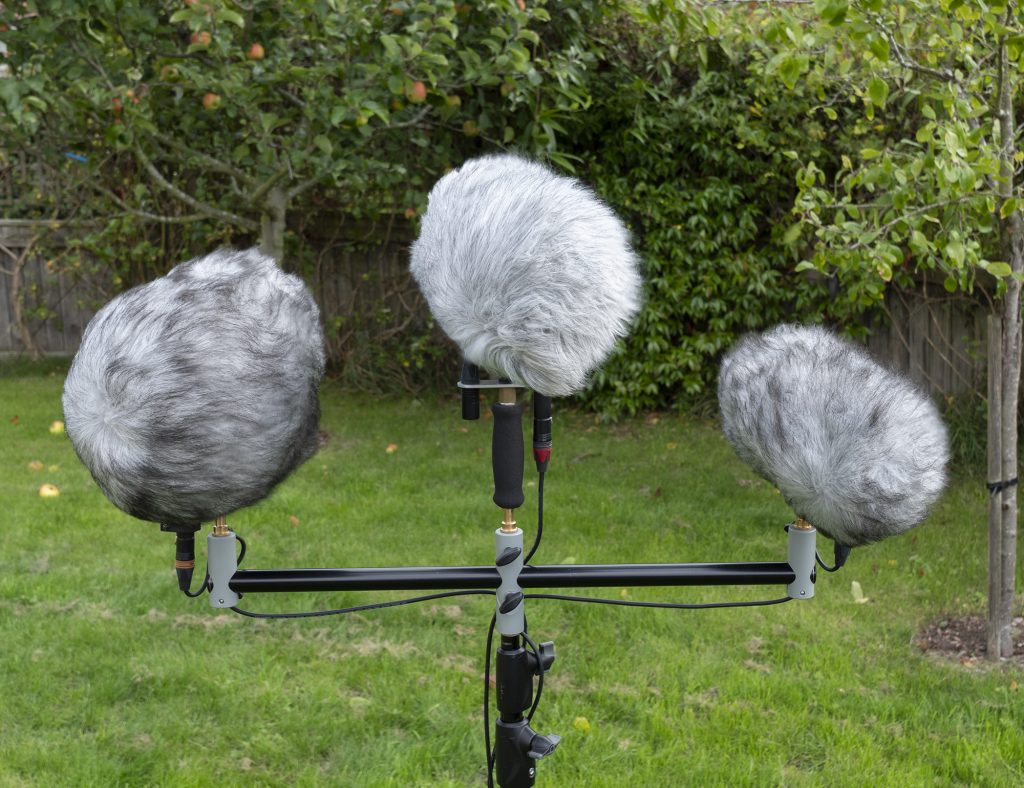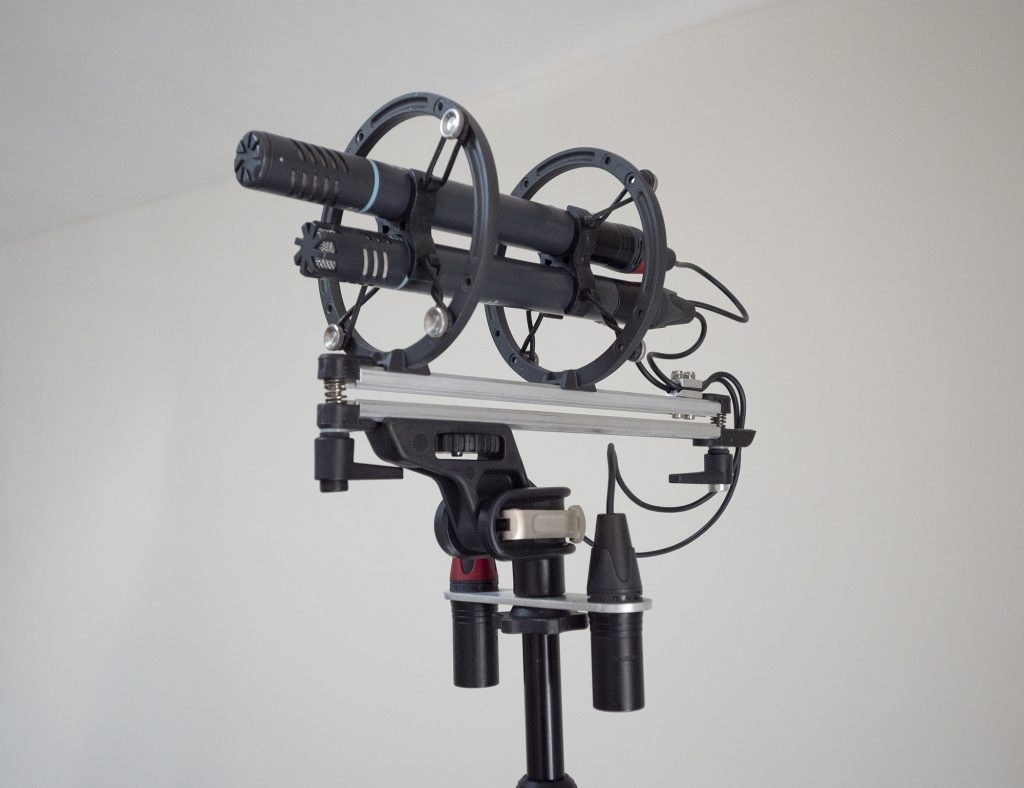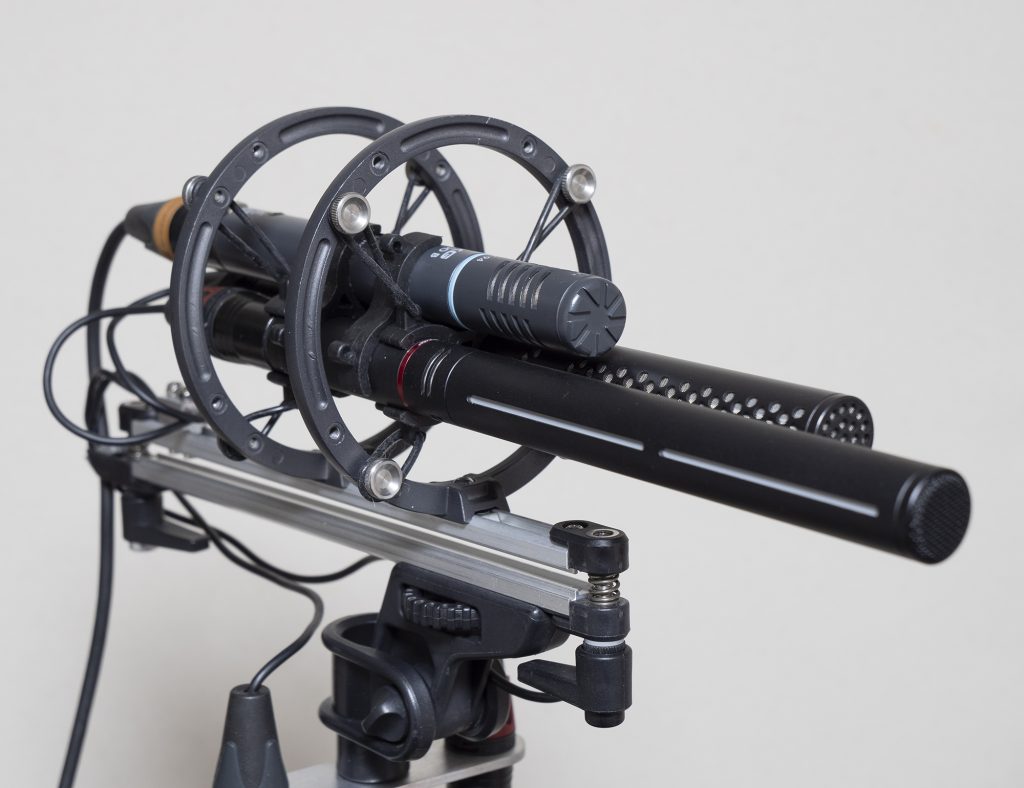
I first became aware of Radius Windshields this spring, and a bit of delving showed a familiar figure at the helm – Simon Davies, formerly of Rycote (and whose mother, Vivienne, had succeeded the founder, John Gozzard, as owner). Evidently Simon hasn’t lost the bug for designing and manufacturing shock mounts and windshields, and, along with his wife Odette and daughter Megan (both with strong Rycote credentials) and a small team, has tantalized many of us with details about the nascent business, its ethos and, increasingly, the steps on the road to its first products. As I understand it, the new company is focused on making its products locally (Radius is based in Devon, with some production in Stroud) and on working closely with its customers: it very much sounds as if the plan is to stay small, so I doubt if we will see another company offering the huge range of Rycote’s products – at least in my lifetime!
After all the social media updates on the fledgling company it was good to receive examples of the first two products and put them through their paces. These are a pair of microphone shock mounts geared for the end of a boom pole, one – the RAD-1 – being for interior use and the other – the RAD-2 – being for exterior use. Both come with two pairs of suspension hoops: 72D shore standard hoops in black, and more compliant 62D ‘lite’ hoops in a light blue. The hoops can be mixed and matched, and can face either way (but – the included notes say with obvious reason – always opposing). The mic clips hang from the top of the hoops – so are inverted compared to a Rycote lyre – and have rubbery straps: as the (comprehensive) instructions note, these are primarily designed to retain mics in the clips when in transit, so optional when in use. The hoops fit to the mount that is evidently designed for use with a boom pole, and which has an integrated XLR holder. The angle of the shock mount can be changed by a pivot knob that does not just rely on friction. The injection-moulded thermoplastic construction feels very precise and good quality. So far, so good: they look great (OK, perhaps the Cambridge-blue of the lighter hoops isn’t everyone’s cup of tea…) and feel great. And, the details, such as the retaining O-ring on the pivot knob, the cable cleats, and the boom pole mount, all show careful – and experienced – design. But, and this is the crux, how do they perform? On to some tests then…
RAD-2 exterior shock mount

First then to the shock mount designed for exterior use: the RAD-2. Evidently designed for a softie type slip-on windshield (Radius are producing the Nimbus softie imminently), I set this up with a Rycote Classic Softie (18cm) alongside the Rycote Classic Softie kit (18cm) on a short stereo bar on the end of a boom pole, with a pair of Rycote’s excellent HC-22 shotgun mics. Recording into a Sound Devices MixPre-3, I held the boom in a conventional manner with the mics angled down as if booming normally, and then moved the mics up and down and then side to side: these were rapid movements, clumsier than normal. And finally, I held the boom pole vertically, bumping it (lightly!) repeatedly onto a carpeted floor to send shocks up the pole. Obviously, all this was something of a stress test for the shock mounts and essential since in smooth and gentle operation, both performed well and were impossible to differentiate. Normally, I include wav files with my tests and reviews, but I think with these tests numerous sound samples of me wobbling a boom pole would make for pretty tedious listening, and the following spectrograms – which very much reflect what I could hear in the field and when listening back – make the findings more easily digestible.



The tests with the classic softies then show fairly consistent results, with noise from motion and transmitted via the boom pole all, as would be expected, at low frequency and, if wild movement was to be attempted for real, easily removable with a, say, 80Hz high-pass filter: this would likely be needed for wind noise anyway. One thing is evident in that the RAD-2 has a slightly more base-heavy profile, which opens up scope for a slightly lower high-pass filter. But I’d be happy using either: evidently choice would come down to whether you want a pistol grip too (the Rycote) or prefer the more boom pole-friendly RAD-2.
RAD-1 interior shock mount: standard (black) hoops
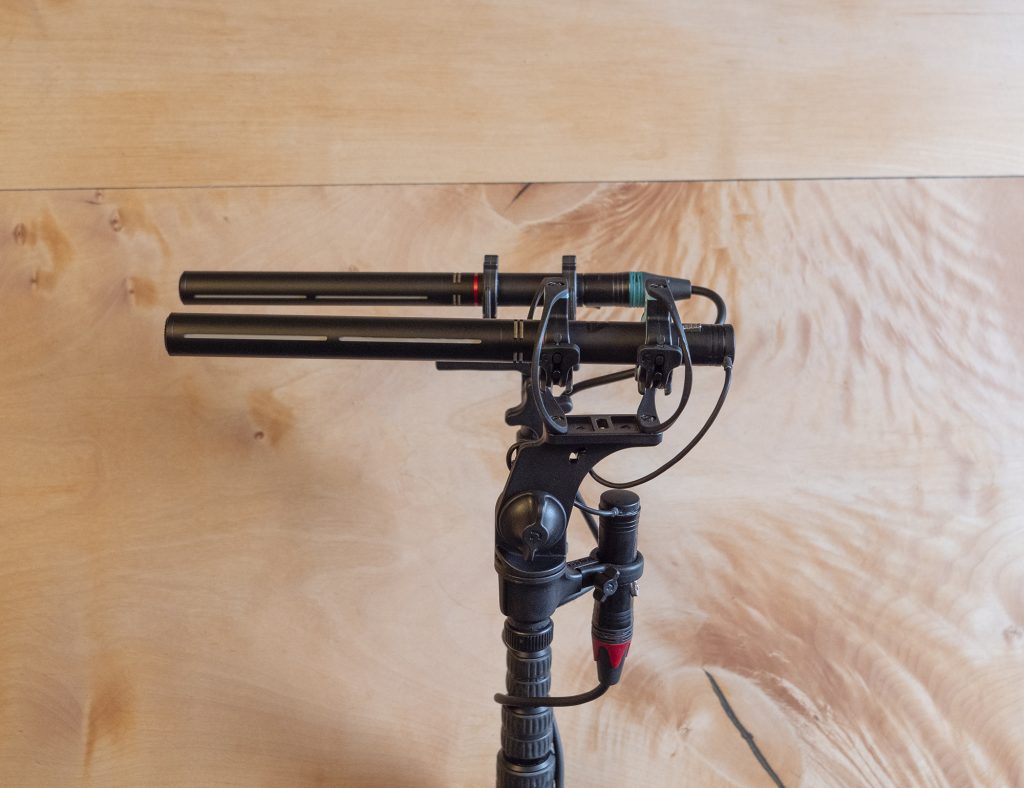
Moving then to the shock mount design for interiors – the RAD-1 – I first compared the mount with its stiffer 72D shore hoops against the Rycote InVision 7 with its, standard, 72 shore lyres. I used the Rycote HC-22 shotgun mics again, with the same stereo-bar on boom pole set up, and repeated the same three sets of movements. The spectrograms below show the results:



Again the first two tests showed fairly similar results, with the InVision 7 just slightly shading the RAD-1 in terms of peak noise, but with the RAD-2 showing a lower frequency weighting: this was subtle, however, and not evident in the boom bumping test. With both mounts, the noise was very low: even a 40Hz high-pass filter removed it.
RAD-1 interior shock mount: ‘lite’ (blue) hoops

So much for the 100g HC-22 shotgun mics: I was interested to see how the RAD-2 worked with lighter mics, so mounted a pair of my CA-08 cardioids (69g): the CA-08 weighs the same as my SC-08 supercardioid and, evidently, use of a light supercardioid or hypercardioid (perhaps with no more than a foam cover) is a likely use for interior booming. With the lighter mics, I switched the RAD-1 to its light blue 62D shore hoops, and the InVision 7 to the softest (i.e. 62 shore) lyres. The tests were as before and, again, the results can be seen in the spectrograms below:



In the two mic movement tests, the RAD-1 has the slight edge in terms of overall peak noise levels, although this is matched in the boom pole bumping test: and there is again a slightly bass heavier element to the noise from the Radius shock mount. But both perform well, and the noise, even from such extreme mishandling, is very low in frequency and easy to remove with a high-pass filter (which, again, would be necessary on wind grounds for any rapid boom movements indoors).
RAD-1 interior shock mount: ‘lite’ (blue) hoops vs Nano Shield shock mount

I have been impressed by the new lyres designed for Rycote’s Nano Shields. In use I have found they perform better than the older lyre designs used in Rycote’s Cyclones, modular windshields and InVision mounts, as indeed intended. In particular, I have found the most compliant 55 shore Nano Shield lyres to be the best performers for Rycote’s own lightweight (i.e. 69g) SDC mics, outperforming the 62-shore soft lyres (my previous best fit for such light mics). At present the new lyres only fit the mount within the Nano Shield full basket windshields, so the comparison – unless you also own a Nano Shield – with the RAD-1 is a bit spurious, but, in for a penny in for a pound!
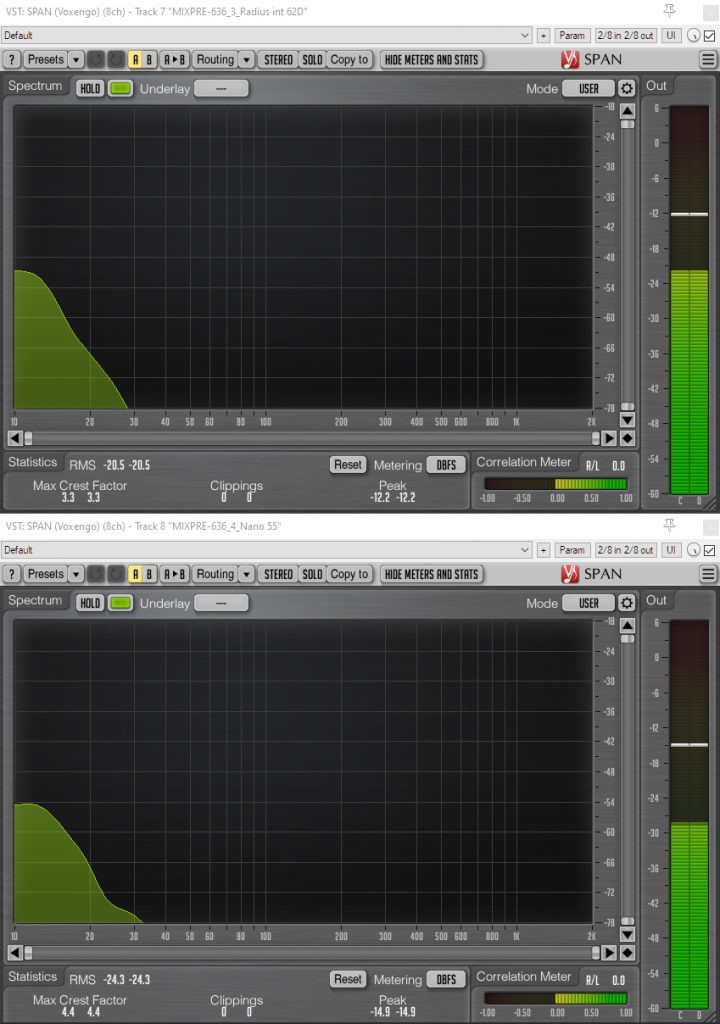


My expectations for the RAD-1, even with its most compliant 62D-shore hoops, against the 55-shore Nano Shield shock mount were low. Indeed, the Nano Shield suspension outperformed the RAD-1 on the side to side test, where the lateral resistance of the new lyres proved most evident; but the difference was more subtle with the up and down motion (and the RAD-1 again had more of its energy at lower frequencies); and, surprisingly, the RAD-1 was slightly better in the boom pole bump test. So a much closer match between the two shock mounts than I had assumed would be the case.
Conclusions
The results of small differences in such specific tests and with such specific mics, cables and boom pole should not be overstated. From these tests (and broader testing that I have undertaken with the shock mounts), however, it is clear that the RAD-1 and RAD-2 perform well and, also, close to the Rycote equivalents, insofar as there are exact equivalents. Indeed, it is the physical differences between, and different features of, the shock mounts that are likely to determine which model anyone could or should choose: the XLR plug holder and better pivot knob of the Radius shock mounts vs the more minimalist InVision series shock mounts (which make the latter more suited to acoustic music recording, for example); or the more boom pole geared design of the Radius shock mounts vs the Rycote InVision softie lyre mount with pistol grip? Of course, as Radius introduce new models, those differences will change. Pricing will come into play too, although the different suspension hoops included will make up for the slightly higher pricing of the Radius shock mounts for many. Anyway, it is good to see such a high-quality start to Radius Windshield’s production, to have another UK manufacturer, and to have more choice in terms of shock mounts and suspensions. I’m also glad that all the experience embodied in the team hasn’t been lost to some unrelated business or the golf course! It will be interesting to see what comes from Radius over the next few years; what their first full basket windshield is like; and, with my personal interests, what they produce in due course in the way of suspensions for more esoteric uses such as mid-side mic pairs.
NB Although I matched the mics and gain in each set of two-mic test, the signals were normalized in Reaper so that I could get a decent level of shock mount noise for each comparison: therefore, please don’t compare noise levels across the different sets of tests or, indeed, start thinking that the shock mounts are all noisy! All the shock mounts I used here are ones I would (indeed, do) happily use and are excellent: this was very much about accentuating any differences between mounts in each set of tests.




